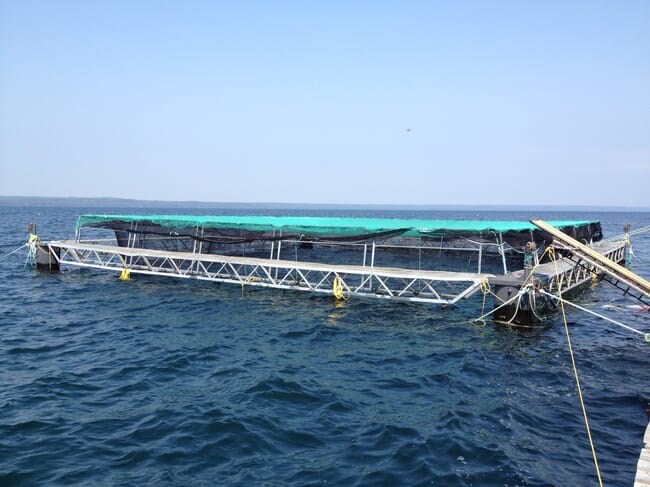
The Great Lakes are home to a range of aquaculture operations © Jeff Tuerk
Called Aquaculture Regulation in the Great Lakes, the report breaks down complex legal frameworks and provides practical insights to help aquaculture producers understand and navigate state and regional requirements with greater confidence.
It was developed by the National Sea Grant Law Center (NSGLC) in partnership with the Minnesota Sea Grant-led Great Lakes Aquaculture Collaborative (GLAC), which formed to support aquaculture in the eight Sea Grant programnes that border the Great Lakes and Lake Champlain Sea Grant.
"Understanding the regulatory landscape is crucial for the growth and sustainability of aquaculture in the Great Lakes region," said Amy Schrank, MNSG extension leader, fisheries and aquaculture extension educator, and GLAC project lead. "This publication serves as a valuable resource for fish farmers and policymakers to navigate a complex legal environment and identify opportunities for harmonization and improvement."
The comprehensive report offers an in-depth analysis of the legal frameworks governing aquaculture across the eight Great Lakes states, as well as Lake Champlain, and aims to support the development of an environmentally responsible and sustainable aquaculture industry in the region. The report and appendices provide an overview of each state’s existing aquaculture laws, regulations and policies.
The report involved an examination of state laws, permitting requirements, approved and prohibited species and health requirements relating to aquaculture. It also included select state environmental laws, regulations and permits that may implicate aquaculture production – including water withdrawal, pollutant discharge, wetlands and right-to-farm laws.
The report’s analysis identified commonalities, differences and potential gaps that may present challenges to aquaculture operations across the region. The findings are intended to enhance understanding and facilitate informed decision-making among fish farmers, regulators, stakeholders, policymakers and others involved in aquaculture.
This report and other Great Lakes aquaculture resources are available here.



